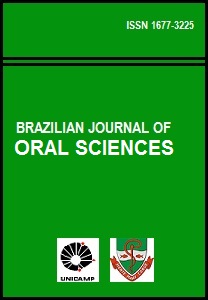Abstract
Aim: To compare, in vitro, the performance of three radiographic methods for the detection of occlusal caries in permanent teeth. Methods: A total of 96 extracted molars with no apparent occlusal cavitation were selected, they were photographed and radiographed under standardized conditions using conventional E-plus films and two digital systems, CDR and Sidexis. Two examiners analyzed all films and images, recording the presence and lesion depth. One quarter of the teeth were re-examined for intra- and interexaminer agreements. The teeth were subsequently bisected and examined under a stereomicroscope. The intra and interexaminer agreements and the diagnostic performance (sensitivity, specificity, accuracy and the area under receiver operating characteristic, ROC curve) of each method were evaluated. Results: Out of 96 occlusal surfaces, 41 were sound, 31 had lesions in enamel, and 24 had dentin lesions. Weighted Kappa values for intraexaminer agreement varied widely, depending on both the observer and method. The interexaminer agreement was higher for the digital images than for the conventional films. The area under the ROC curve for enamel and dentin caries (at D1 diagnostic threshold) was 0.55 for films, 0.60 for Schick and 0.54 for Sirona, which were not significantly different from each other. Conclusions: Digital images presented better results of interexaminer agreement; however, no additional effect in the diagnostic performance could be observed in comparison to conventional films.The Brazilian Journal of Oral Sciences uses the Creative Commons license (CC), thus preserving the integrity of the articles in an open access environment.
Downloads
Download data is not yet available.

